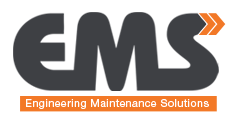RSS feeds for
1) Type of compressor: positive displacement or dynamic
2) Type of compression: oil free or oil injected
3) Construction of compressor: gastight, hazardous gas or atmosphere, compressor metallurgies, instrumentation, motor type and manufacturer
4) Operation of compressor: variable ambient conditions, variable flow and/or pressure requirements, variable properties of the air or gas
Type of compressor is the first and most important selection criteria. A dynamic compressor will typically provide for small fluctuations in flow and discharge pressure through the use of guide vanes and/or throttle valves. These compressors operate in-between choke and surge regions and the vanes/valves help the compressor to run at its most optimal point. With the use of VFD the flow/pressure curve can be shifted on the performance curve to provide some variability.
These compressors are well suited for applications in which the flow/pressure doesn't vary more than 30%, or the ambient conditions or air/gas composition doesn't exhibit swings of more than 30%. The positive displacement compressor will provide a relatively constant flow regardless of what the pressure requirement is. With the use of a VFD this machine can provide for many applications with varying flow and pressure requirements.
The positive displacement is typically simpler than a dynamic compressor since it does not require the use of guide vanes, throttle valves, or sophisticated instrumentation. Finally, the buyer will need to determine if the compressor will need to be 100% oil free or oil injected. The oil injected machines can include oil separation and filtration to lower the oil content in the gas down to a few ppm. Some applications can handle this while others cannot, especially if the downstream oil accumulation over time is detrimental to the process.
For more solutions please try www.hazeng.com or www.engineeringtrader.com



